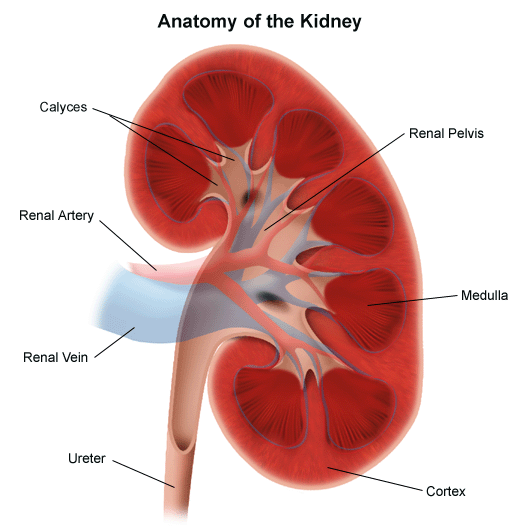Horseshoe Kidney | Diagnosis & Treatments
How is horseshoe kidney diagnosed?
If your child is not experiencing symptoms, she may not need diagnosis or treatment. If she is experiencing symptoms, her physician may order one or more of the following diagnostic tests:
- renal ultrasound: This is an imaging technique that uses a computer and high-frequency sound waves to create images of blood vessels, tissues, and organs. Physicians are able to view internal organs as they function, and assess blood flow through various vessels.
- voiding cystourethrogram (VCUG): This is a specific x-ray that examines the your child's urinary tract. A catheter (hollow tube) is placed in her urethra (tube that drains urine from the bladder to the outside of the body) and her bladder is filled with a liquid dye. X-ray images are taken as her bladder fills and empties. The images show if there is any reverse flow of urine into the ureters and kidneys.
- intravenous pyelogram (IVP): This is an imaging technique that uses an x-ray to see the structures of the urinary tract. An intravenous contrast of dye is given so that the structures can be seen on film. This technique reveals the rate and path of your child's urine flow through the urinary tract.
- blood and urine tests: These determine how well your child's kidneys may be functioning.
How do we treat horseshoe kidney?
There is no known cure for a horseshoe kidney, but if your child has complications, her symptoms will be treated. Treatment approaches may include:
- antibiotics (to treat an underlying infection)
- surgical intervention (for symptomatic kidney stones)
If your child has no symptoms, she may not need to be treated.
If your child has hydronephrosis, your doctor may want to discuss several other non-surgical or surgical treatment options.



